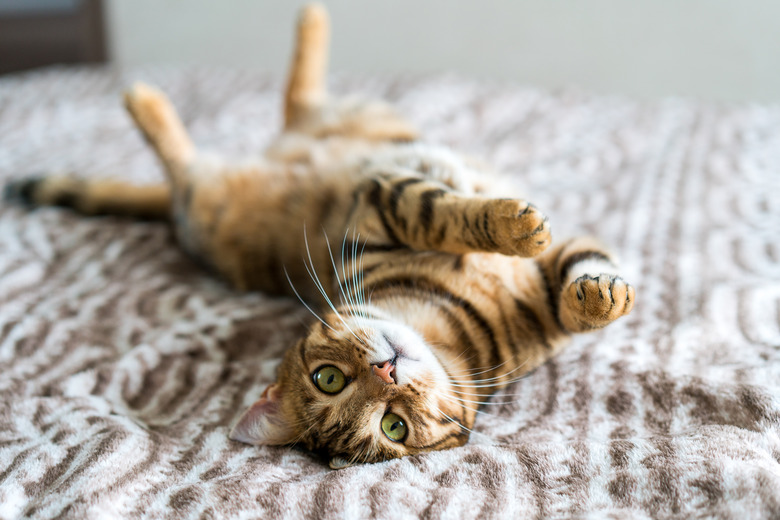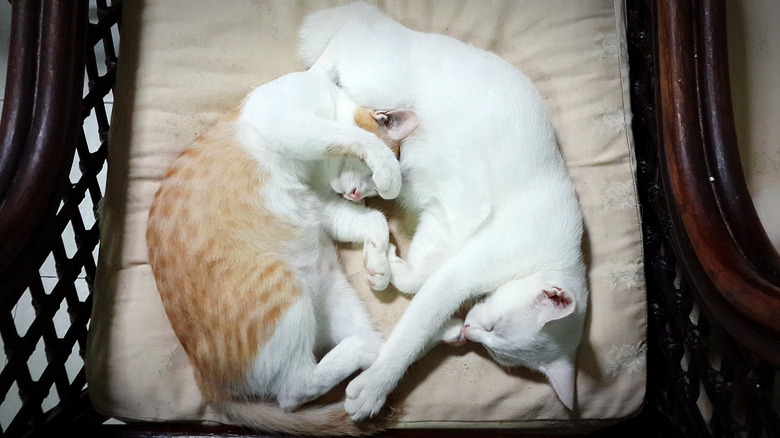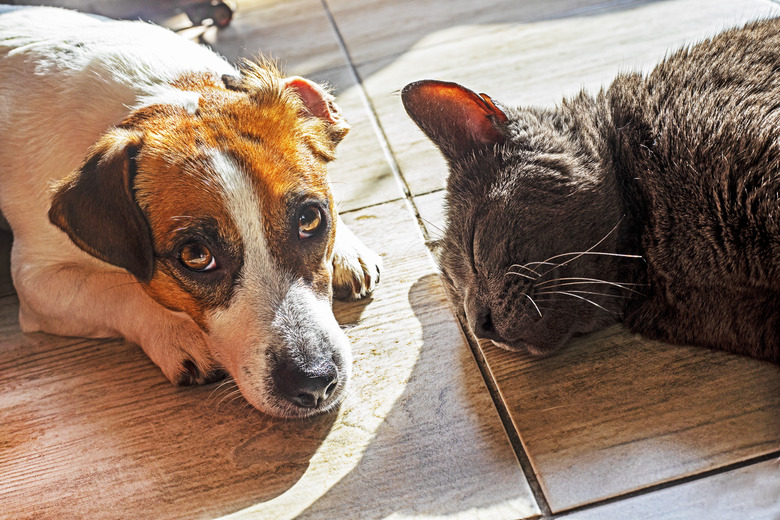My Cat Has Dandruff And Black Specks In His Fur
Your cat is scratching up a storm. As they rake a paw through their fur, little black and white specks go flying into the air. When you use a flea comb on them, you find the same flakes. Rather than a single skin problem, your kitty may be dealing with both a flea infestation and dandruff, each of which has its own treatment.
The appearance of black spots and white specks in your cat's fur can be unsettling, but with a little sleuthing and a veterinarian's help, you can discover their cause and be on the way to ensuring your cat is free from skin conditions and flea infestations.
Signs of a flea infestation
Signs of a flea infestation
You may not see fleas hopping on your cat's fur, but finding a number of black specks on them is an indicator that they have fleas. The black dots are often called "flea dirt" and are the feces of the fleas. A way to test to make sure the black specks come from fleas is to place some on a piece of damp paper towel. If it's flea dirt, it will dissolve, leaving behind a reddish-brown blotch. Regular dirt particles will just leave a gray stain.
Cat problems from fleas
Cat problems from fleas
- Scratching. Some cats itch incessantly from just a few bites, and you'll see them scratching themselves often, while it might take a larger infestation to bother other cats. Cats that develop flea allergy dermatitis will feel much more itchy after flea bites.
- Anemia. Adult fleas feed on your cat's blood after they bite your cat. For kittens and small cats or cats with a severe infestation, the blood loss can lead to anemia.
- Tapeworms. Another hazard of a flea infestation is that they are often accompanied by tapeworms. This is because adult fleas can contain tapeworm eggs, and if your cat ingests a flea with tapeworms while grooming, your cat will also have tapeworms.
Getting rid of your cat's flea problem
Getting rid of your cat's flea problem
To eradicate fleas, it's important to not just treat your cat but other pets and your home as well. Commercial flea prevention products, like Frontline Plus, Revolution, and Advantage II, are applied topically. Chemicals in topical medications will interrupt the life cycle and kill fleas on your cat as well as the flea eggs and larvae.
Though fleas lay eggs on your cat, the eggs fall off into the environment. The larvae hatch from the eggs. So the larvae aren't on your cat. These products that work against larvae do that when the hair and dander (that has absorbed the flea product) sheds into the environment and comes into contact with the larvae. Environmental control is important because the pet flea product alone isn't going to combat all the eggs and larvae this way.
Treating other pets in the home for fleas
Treating other pets in the home for fleas
You will need to treat all other cats and dogs in your home to prevent re-infestation and stay flea-free. However, do not use a product made for dogs on your cat. Flea treatments for dogs contain much higher levels of pyrethrins, which are toxic to cats.
You must also eliminate fleas from your cat's environment. Commercial sprays and powders can be used on carpeting. Your pet's bedding should be washed in hot water. Another step to getting rid of fleas is vacuuming all of your floors and furniture to make sure no flea eggs are left behind to hatch. When you are finished vacuuming, be sure to dispose of the vacuum bag or contents of the canister in a trash bag, close the bag, and remove it from your house so that any live fleas do not get back into the environment.
Dandruff flakes on your cat
Dandruff flakes on your cat
If there are white flakes as well as black specks in your cat's coat, they likely also have dandruff. Akin to human dandruff, the condition is caused when the oil glands in a cat's skin go into overdrive, producing more oil than is needed. This leads to irritation, itching, and those white flakes that may fall onto your pet's bed and other favorite places. Cats with dandruff may also shed more.
Ringworm can cause dandruff as well. This fungal infection will show up as circular patterns on your cat's skin and lead to hair loss. To cure this contagious condition, which you can catch from your cat, your veterinarian must prescribe anti-fungal medications, usually in both topical and oral forms. Warm weather can also lead to an oversecretion of oils in your cat's skin and contribute to dandruff.
Dry conditions can also make the skin dry out and cause overly dry skin to flake off. A trip to the veterinarian is important in diagnosing dandruff to rule out ringworm; parasites, like mites; or skin conditions. Don't bathe your cat (unless directed to by your veterinarian), as shampoos can dry out the cat's skin and make it more prone to flaking. Obese cats tend to have dandruff particularly toward the rear of their body because they have a harder time washing it, which helps lower the amount of oil and flakes.
A healthy diet is important in keeping a cat's coat free of flakes. Their food needs to contain omega 3 and 6 fatty acids as well as vitamin A. Some cat foods are specially formulated to help maintain healthy skin.
The bottom line
The bottom line
If you find black specks on or near your cat, place them on a wet paper towel to determine if they are flea dirt. If your cat has a flea infestation, it is imperative to treat all animals in the house as well as deep clean the entire house to interrupt the life cycle and stay flea-free. If you find white specks on your cat, it is likely dandruff that can be caused by dry skin, allergies, ringworm, a poor diet, mites, or other skin conditions. A change of diet may cure the issue, but you will likely also need to speak with your DVM to determine the cause of the dandruff.


